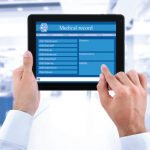- B—The presenting problem(s) is what is evaluated during the history and examination by the provider. The chief complaint is in the patient’s own words or is a follow-up for his or her current condition. The history of present illness, along with the review of systems, usually guides the provider through the examination. Depending on the significance of the problem(s), it leads the provider to decide on the assessment and treatment plan for that date of service. For example, the current issue could give reason for the provider to order tests or request notes from another physician. The problem could also determine what type of prescription plan management the patient may need. This is one reason why the presenting problem usually drives the medical necessity of the level of E/M service.
- B—False. Medical decision making is just one component of an E/M visit. It plays a key part in medical necessity, along with the presenting problem, for that date of service. The Centers for Medicare & Medicaid Services (CMS) defines it as:
- Medical necessity of a service is the overarching criterion for payment in addition to the individual requirement of a CPT code. It would not be medically necessary or appropriate to bill a higher level E/M service when a lower level of service is warranted. The volume of documentation should not be the primary influence upon which a specific level of service is billed. Documentation should support the level of service reported.
- B—No. Even for an established patient, the requirement is two out of three for the history, examination and/or MDM. As mentioned in the answer for question one, the level of the visit would depend on the presenting problem, assessment and treatment plan. The comprehensive history and examination must be supported by medical necessity.
- B—The examination is the difference between the 1995 and the 1997 documentation guidelines for E/M visits. The 1995 documentation guidelines are very ambiguous. The provider only has to meet one element of the organ system or body area examined, while the 1997 guidelines consist of elements identified by bullets. For 1997, each bullet has specific instructions that must be completed to count for that bullet, because there are key components within some of the elements. For example, to qualify for one of the bullets for constitution, at least three out of the seven signs must be met. Each organ system has its own examination that contains different ways to meet the bullets. Adding up all the bullets will determine the level of visit for the examination.
- D—All of the above. The documentation of a visit tells the story of why the patient was seen in the practice; what the provider found during the examination; what the assessment was, the clinical impression and the number and severity of the problems; and finally what the provider’s treatment plan for that patient is.
For questions or additional information on coding and documentation guidelines, contact Melesia Tillman, CPC-I, CPC, CRHC, CHA, via email at [email protected] or call 404-633-3777 x820.


